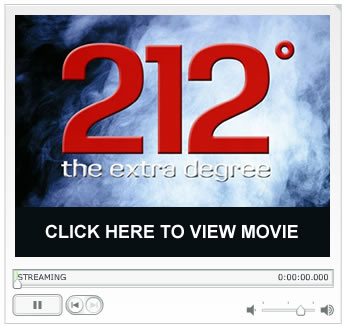Dear Friends,
What's the difference between your Core Service and your Customer Service?
If you can't tell, either can the customer.
Let's keep this simple.
Core Service satisfies a customer. Customer Service delights and exceeds customer's expectations.
Core Service attracts a customer for the first time.
Customer Service keeps a customer returning over and over.
Core Service is product satisfaction. Customer Service is process satisfaction.
Core Service is what you do. Customer Service is how you do it.
Core Service is when a customer say's, "everything went smoothly." Customer Service is when a customer says, "she treated me like her only customer."
You know the difference. Often you can't define it, but you always know it when you see it.
Businesses with high service quality increase market share, have significantly higher profits and generate business through referrals, on purpose, by design.
They get it. But not everyone does.
Some don't know the difference and therefore cannot manage their service delivery by clearly differentiating their product quality and their process quality.
Their Core Service and their Customer Service are different.
Core Service is what customers see. Customer Service is what customers feel.
When one begins to manage customer expectations as well as managing product quality, they change their reputation and increase their referral opportunities.
Over the past several months we have explored the elements of database marketing, from direct mail to the use of customer surveys.
Why do some individuals seem to get a better response on their after-marketing efforts?
Why do they get more referrals from people who know them, like them, know what they do and how they help others?
The answer may lie with being able to tell the difference between their Core Service and their Customer Service.
Quality and Aftermarketing are the key components of Relationship Marketing.
Relationship Marketing is the territory where database marketing, client contact programs, referral networks, advocacy groups, or any referral alliance networks survive.
After-marketing strategies cannot succeed in the absence of quality.
The other day I overheard a conversation between two businessmen sitting at the table next to me and the topic of "Customer Service" came up.
One guy said to the other, "service sucks, it's getting worse everyday. No matter where you go, it's just plain lousy."
Is he right?
I don't understand it. With all the literature on service quality and the volumes of books and training in most companies today on customer service, service in general just seems to be getting worse.
If you are able to distinguish between both your Core Service and your Customer Service you can, and will, change your service reputation and increase your referrals.
People do business with a company the second time because of how they feel about their service. They refer others because they feel the likelihood that their friends and family will be treated the same way.
This requires a partnership between your Core Service and your Customer Service.
It's been said that marketing, over the years, has shifted in it's orientation from "tricking" customers to "blaming" customers to "satisfying" customers.
Even the most well intentioned service provider or company can lose sight of their most important objective, satisfying your customers.
Many companies spend most of their time creating new products or aggressively competing with other companies. They are focused on their internal operation or trying to win the customer away from their competitor.
Instead, expand your view to satisfying and retaining your current customers.
This can best be accomplished by being able to tell the difference between your Core Service and your Customer Service.
Know your product.
Manage your customer's perception.
It's that simple.
The best is yet to be!
On Your Team
Jeffrey Stanton ITI, CLC, CNE, WOW
Your Trusted Advisor For Life
347-466-3047
One of the fastest ways to build a successful business is by training. Now, with me, I like to invest significant time immersing myself in training, while some people prefer to take it in bite-size chunks. Whatever your preference is, now is the best time to contact me.
If you have found this tip useful, please share it with any friends, family, colleagues and associates who you think will be interested. Feel free to print it (with credit and subscription information) and continue to enjoy the tips. I am always grateful for any comments, criticisms or other feedback that you may have. Please send them to feedback@jeffreysjournal.com
http://www.YourProfessionalDevelopment.com
Certified Negotiation Expert (CNE) Designation Training


































No comments:
Post a Comment